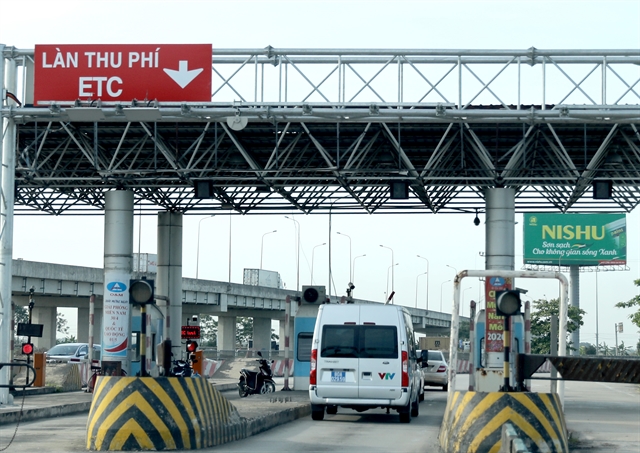 Society
Society


|
| An automatic electronic toll collection on the Hà Nội-Hải Phòng Expressway. — VNA/VNS Photo Đoàn Tùng |
HÀ NỘI — Việt Nam will strive to have 100 per cent of vehicles using electronic toll collection accounts by 2025, helping reduce social costs and make it easier for vehicle owners and businesses, according to the Ministry of Transport (MoT).
The proposal is part of a plan recently approved by the Transport Ministry to strengthen the application of information technology and digital transformation in the road system in 2023-25 with a vision to 2030.
Under the scheme, the application of information technology and promotion of digital transformation in the field of road networks will place the people and businesses at the centre, helping improve the efficiency of the country’s road system to maintain and develop a modern and sustainable road system.
In addition, the plan aims to strictly manage transport activities, vehicle training, auto testing or grant of driving licences to ensure traffic safety and environmental protection.
The plan has set a target of having 100 per cent of eligible administrative procedures being processed online. During this period, the target of 100 per cent of road infrastructure data managed by the central Government, will be collected and updated into the database in order to monitor, make statistics and planning, as well as an investment plan.
The scheme also focuses on building and completing information technology systems to manage transportation activities and automatically gathering violations of transport businesses, vehicles or drivers in order to help authorised agencies to inspect and examine or give penalties for those who violate regulations.
Besides, the scheme will also develop and complete an information technology system for driving test centres to improve the quality of training, auto testing, or granting of driver’s licences with a view to fighting wrongdoings or negative behaviours of traffic inspectors.
To cope with widespread violations at auto inspection centres, the plan will also have an automatic vehicle detection system to conduct penalties to protect transport infrastructure while ensuring traffic safety and preventing corruption and negative behaviours.
The scheme has outlined 28 tasks and solutions to be implemented from now until 2030 involving building and completing shared technical systems, providing online public services or conducting vehicle training and developing human resources.
According to the Việt Nam Road Administration, it has worked with relevant bodies to implement key tasks of the plan to put the information technology systems into operation soon so as to enhance the efficient management of the country’s road transport. — VNS




